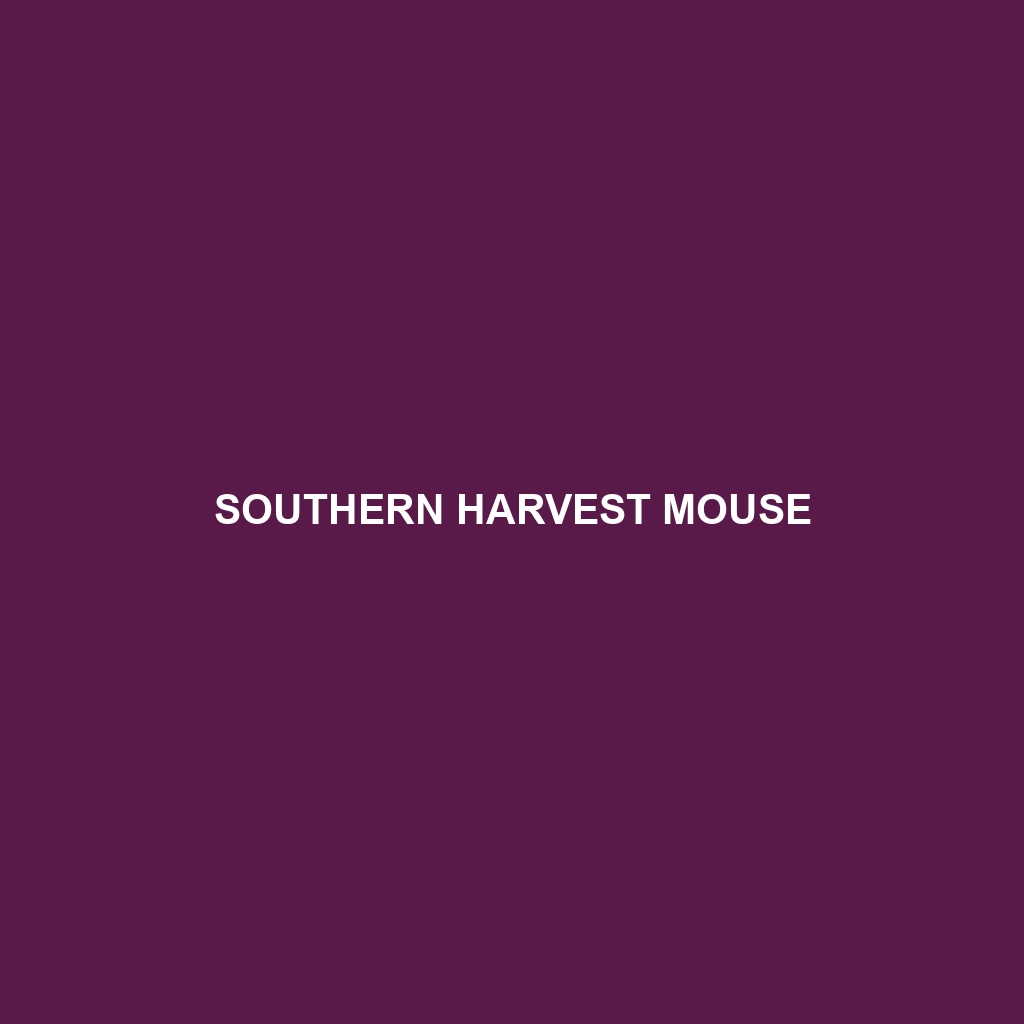Southern Harvest Mouse (Reithrodontomys humulis)
Common Name: Southern Harvest Mouse
Scientific Name: Reithrodontomys humulis
Habitat
The Southern Harvest Mouse is primarily found in the southeastern regions of the United States, including states such as Florida, Georgia, Alabama, and Mississippi. This species typically inhabits grasslands, fields, and agricultural landscapes, favoring areas with ample ground cover such as dense grasses and low shrubs. They thrive in environments like meadows and wetlands, which provide them with both shelter and food sources.
Physical Characteristics
Adult Southern Harvest Mice are small, averaging between 5 to 7 inches in length, including the tail, which is often equal to or slightly longer than the body. Their fur is generally light brown to tawny, with a slightly lighter underbelly. One of their distinctive features is the long, tufted tail and well-developed, prominent whiskers. They possess large ears that aid in their hearing, making them adept at sensing predators in their environment.
Behavior
Southern Harvest Mice are primarily nocturnal, exhibiting increased activity during the night when they forage for food. They are known for their agile movements, allowing them to efficiently navigate through grass and vegetation. These mice are generally solitary but may be observed in small groups during certain seasons. Their ability to build intricate nests on the ground using grass and other plant materials is a remarkable aspect of their behavior. They are also known to be excellent climbers, often escaping predators by ascending vegetation.
Diet
As granivores, Southern Harvest Mice mainly feed on seeds, particularly from grasses and grains, though they will also consume fruits and insects when available. Their foraging behavior plays a crucial role in seed dispersal within their habitats. Understanding their feeding habits can be essential for studies related to agricultural impacts and ecosystem dynamics.
Reproduction
The breeding season for Southern Harvest Mice typically spans from spring to late summer, coinciding with the availability of food resources. Females can produce multiple litters during this period, with each litter consisting of 3 to 6 offspring. The young are altricial, born blind and hairless, and mature quickly, usually weaning within three weeks. This rapid development allows their populations to respond quickly to environmental changes.
Conservation Status
Currently, the Southern Harvest Mouse is classified as Least Concern by the IUCN but faces potential threats from habitat destruction due to agricultural expansion and urbanization. Conservation efforts aim to protect their habitats and ensure their populations remain stable.
Interesting Facts
Southern Harvest Mice have a unique vocalization that consists of high-pitched squeaks. Additionally, they are known to store food in their nests, which showcases their foraging intelligence. These mice can also leap significant distances, which helps them evade predators effectively.
Role in Ecosystem
Southern Harvest Mice play a significant role in their ecosystems as seed predators and potential prey for larger animals. By feeding on seeds, they help control plant populations and contribute to the health of their habitats. Their presence supports various predators, including birds of prey and small mammals, illustrating their importance in the food web.

